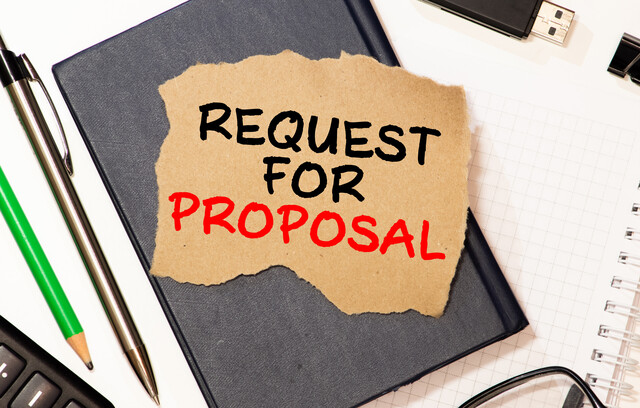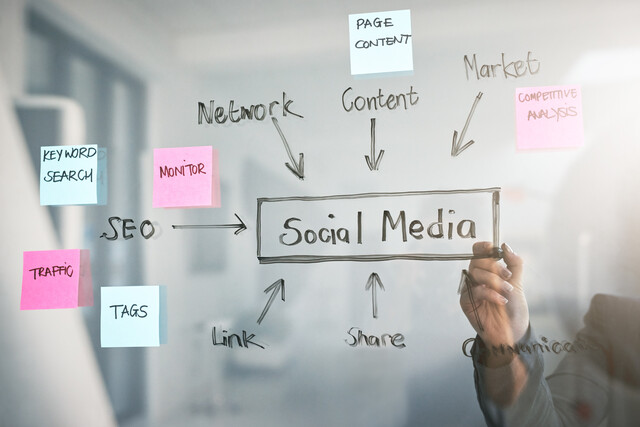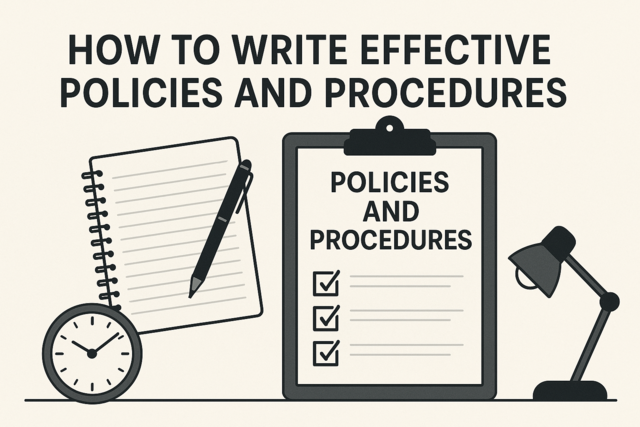As a copywriter, it's not just your job to write copy, and that's it. It's your job to also employ strategies that will make the copy you write effective and successful. In this article, we are going to discuss the different strategies. It's important to commit these strategies to memory and use them in every piece of direct mail that you write.
Present a Big Idea
When it comes to direct mail, a pretty postcard or an attractive envelope may look good, but it alone is not going to persuade anyone to buy from you. It's important that the message in the letter or on the postcard is just as attractive as the cover itself.
That said, think big. You want a big idea for your direct mail piece.
What's the point behind what you're sending?
Is it to introduce your product?
Give a special price?
Highlight your unique guarantee?
Think big. Your postcard or letter should contain an idea that makes people think to themselves, "Wow, I have to do that right now!"
Remember, direct mail is all about giving people a way to take action right away. However, you alone are responsible for giving them the reason that makes them want to take action. Without your big idea, you've spent possibly thousands of dollars on a pretty design and attractive packaging. Your clients don't have the kind of money to waste.
Use Targeted Mailing Lists
Once you have your big idea for your direct mail campaign, you're going to need people to send it to. It is understood that you want to target qualified prospects who will be interested in what you're presenting them. Hey, you don't want to send offers for a meat-buying club to a vegetarian, do you? That would be a waste of your money and of their time. No. You want to target the right audience as much as possible. You can do that by helping your client find the correct mailing list.
Investing in a mailing list may seem like an unneeded cost when you can just send your mail out to 500,000 people randomly and generate some sales. But notice we just said some. Direct mail is typically not about reaching as many people as you can, without regard to their demographic or interests, and hoping a few buy. No way! Successful direct mail is targeted to your particular audience.
With that said, create a profile of your ideal customer. You may have more than one, and that's fine. After you create your customer's profile, you can then use a professional data company such as Info USA or hire a list broker to help you. Taking the time to send your mailers to qualified prospects will net you a lot more success in the short run as well as the long run. If you're going to skip any step in your direct response campaign, please make sure this one isn't it.
Choose the Right Image
If you're using an image with your direct mail campaign, make sure that image matches your message. If you're selling vitamins, you don't want your image to be of a cute little kitten. It may look good, but that cat is not going to help you sell vitamins.
The image that you use should relate to the headline and message. If we use the vitamin example again, and you're headline talks about losing weight, then maybe you want a slender woman for the image. Just keep in mind that the image should be catchy and draw attention, as well as relate to the message.
Let's be honest. If losing weight was something that appealed to you as a consumer, and you received an envelope with a pretty, slender woman holding up a pair of her old, ten sizes too big jeans, you'd be persuaded right then and there to see what was inside. However, if you opened it up to read a headline that talked about a liquidation sale -- well, you'd toss it in the trash quickly.
Every aspect of your direct mail campaign should contain a clear cut, persuasive message to your customer. That said, every aspect must be targeted to your ideal customer and appeal to them. If you leave one thing out, it could cost you the thousands of dollars that your client spent on the campaign, not to mention thousands of dollars in sales.
Create a Killer Headline
With any form of direct mail, your headline is everything. It is what will capture your customer's attention and make them read what you have to say. If we're talking about direct response postcards, then the headline just becomes that much more important. Space is limited on postcards, so you're going to have to be brief, to the point, and make them want to read more. All with just a line.
Whenever you write a headline, it should contain the following elements:
-
Be easy to read. If it's confusing and they have to read it more than once, they'll throw it in the trash instead.
-
Capture interest. Present a benefit in your headline, and make that benefit appealing.
-
Appeal to the reader's needs. Let me tell you, if you think of how your product will benefit your customers, this is easy.
-
Spotlight your selling points in your headline.
-
Suggest the value to come.
Focus on One Idea
As we discussed, the whole purpose of direct mail is to get whoever reads your message to take action right away. Offering them too many options or ideas can cloud their thought process and make them hesitate to take action.
Let's revert to the vitamin sample again. If you want them to buy a certain vitamin because of its amazing benefits (that you name), don't turn around and offer ten other vitamins in the same message. Save that for a website or catalog. Keep your direct mail message focused on one product or idea to increase your chances of making the sale.
Keep Your Message Clear
Keep all your messages clear and easy to read. Whoever reads your message should be able to read it just once and then take action. If they have to go through and read it again, they're not going to bother. They're not going to bother reading it again or take action.
Don't lose a sale before you even start to present your product or idea. It's easy enough to keep a message clear, well thought out, and easy to read. You don't want any complications to stand in the way of making sales, so don't make the message too complicated to comprehend.
Choose the Right Message
Let's face it. People hate advertisements. In fact, people dislike advertisements so much that they tend not to read them at all. What this means to you and your direct mail campaign is that if the message you're sending to your customers sounds like a hyped up advertisement, you've just lost their attention as well as their business.
In today's world, people want to be informed, not misled or tricked. They want to feel like you're teaching them something or revealing something that they need in their lives. That doesn't mean you're not going to use advertisements. Of course you are. They're crucial. But what it does mean is that your advertisements should be geared to get their attention, then provide them with the information they want.
Avoid the hype and instead answer these questions in your direct mail ads:
-
What benefits does my product or service offer my customers?
-
How will those benefits affect my customers?
Needless to say, you may have a wide variety of customers. Different customers may benefit from your product in different ways, but coming up with these ways will help you to target your audience better. When you target your audience better, your direct mail campaign produces better results.
Sell the Next Step
It's hard to sell anything from just a direct response postcard unless your product is fairly cheap. That said, your postcard is probably going to be just one step in the conversion or sale process.
No matter what you do, make sure you define the next step on your postcard. If you want them to request free information, make sure you are letting them know that's what they are doing. What's more, make that free information enticing. Sell that free information! If you're not selling your product from the postcard, then you have to sell the next step instead, whatever that step will be.
This applies to any form of direct mail where you have more than a one-step conversion process. You have to sell the action that you want them to take. It's that simple. Even though the final action may be a sale, until you get them to that step, you have to make sure that you sell them on all the steps to that point. If you don't, you've lost the sale before you even had a chance to make it.
A Strong, Realistic Call to Action
Along with selling the next step, the call to action must also be clear and easy to understand. Don't complicate it with endless procedures or instructions. Make it simple for them to take action right away so they will.
All you need to provide a strong, realistic call to action is a way for them to take that action. Provide them with a phone number or website address. Don't clutter it up with additional things they need to do or can do. They won't do it.
Remember, people are not going to bend over backwards to take action for you. It's your job to bend over backwards so that it's easy for them to take action. It's to your benefit to do everything for them but dial the phone or type in the website address. The simpler it is for them to take action, the more likely it is that they will.
Select the Right Call to Action
Having the right call to action is essential to experiencing successful conversion rates. You want the call to action to coincide with the method of your direct mail, and you also want it to lead the customer to take action and buy your product, even if it's not right away.
We talked about selling the next step, but that is once you decide your call to action. Let's talk about how to decide the right call to action. It's important that you know how to figure that out.
On direct response postcards, for example, there's not a lot of room to sell your product. If you're contacting a new customer or have a new product that you really need to make a hard sell on, you're not going to have the space. That said, it might be a big waste of time to try to get the customer to buy. It might be better to offer more information along with an incentive to get that information.
Factor in your marketing technique to figure out what your appropriate call to action is. Base it on how much information they have, what you're willing to offer, etc. If it's a new, revolutionary product that they've never seen before, you may want to offer a free sample or trial. You can always include a coupon for the actual purchase with the mailing.
When deciding your call to action, keep in mind how you're reaching your audience. Then test. You'll soon discover how to get the most response from your direct marketing response campaign. Direct mail isn't just about making the sale. It's about building a customer base.
Give the Right Incentive for the Desired Response
You have to take into consideration what you are asking people to do in your call to action. Bonuses are a great incentive to get people to take action and buy. They like to feel like they're getting a steal. But if the next step in your direct response campaign isn't to make a sale, but for your audience to take action and do something else, then you must offer an incentive to get them to take that step.
Think about it this way. If your next step is for someone to fill out a long survey, you might have a hard time getting them to do it. Nobody likes to take time with those things. They're boring! However, if you offer the right incentive for them to fill out that survey, then their response changes almost instantly.
It's so important that you balance out the step you are asking them to take with the incentive. What's a long survey worth? That's for you to decide.
Here are some ideas:
-
Sponsor a drawing for a prize. Whoever fills out the survey is entered into the drawing. Just make sure the prize is attractive enough to make them want to enter. A fake diamond ring that you bought at a flea market for $5 is not incentive.
-
If you're asking a prior customer to fill out the survey, consider offering them a generous discount the next time they shop with you.
-
Give away free information, like a report. You'll want to make sure the report relates to the survey or to your audience's interests so that it's an attractive incentive. If you're doing a survey on smokers, then offering a free report on how to quit without pills or a hypnotist may be an attractive option.
You'll be pleasantly surprised at the increase in your conversion rates when you offer incentives that equal the desired response. And remember, the more attractive your incentive is, the more response you are going to get. It's your job as a copywriter to suggest an added incentive to a client if the client isn't already offering one.
State the Guarantee Clearly and Frequently
It should be understood that nobody wants to be ripped off or scammed. Keep that in mind, and state any guarantee clearly and frequently. Let your audience know exactly what kind of guarantee is offered. Repeat it time and time again, so they remember.
Make sure the terms of your guarantee are strong and clear. Your audience should know just what the guarantee offers.
Does it offer their money back?
A new product?
A replacement?
Don't leave them with a doubt. Not only can doubts dissuade them from taking action, it can create problems down the road and possibly cost your client more customers than you can imagine. Word of mouth is powerful.
You also need to make them aware what situations will allow them to take advantage of the guarantee. Some phone manufacturers give you a one-year parts replacement warranty, but that warranty is invalid if it is struck by lightning. It's important your terms are clear to both you and your audience.
Follow these tips when creating a guarantee:
-
Specify what is guaranteed, i.e. their satisfaction, the product, etc.
-
Specify the duration of the guarantee.
-
Make the terms clear. If you're selling fruitcakes, do they get their money back if they don't like the taste?
-
Highlight the benefits of the guarantee. For example, your money back, a replacement, etc.
-
Repeat the guarantee frequently. "And remember, if at any time�"
Stimulate Response by Offering a Time Limit
Creating a strong and clear guarantee that is repeated frequently gives your customer reassurance that their investment in the product is protected. It also makes them feel more secure. For your client, it prevents customer service difficulties down the road when someone tries to cash in on a vague guarantee. Remember, a poorly constructed guarantee can cost your client money!
Offer Special Savings, Bonuses, or Premiums
Wow, talk about an incentive for a health nut!
Working with your client to create special savings, bonuses, and premiums to accompany your product can increase your direct mail campaign response dramatically. Even though it may seem that you're losing money for your client by tossing in generous discounts or free products, the increase in the number of orders will be so great, that your client can end up making more money!
That said, offering incentives such as these requires a little thought and some testing. You have to think about your target audience and what your target audience wants. What benefits are they ultimately looking for? Then create incentives based on them. Offering incentives won't do a bit of good if your target audience isn't interested.
Test bonuses and incentives. See what increases conversion rates the most. Learn what your target audience really wants to increase the success of future direct mail campaigns. Marketing is all about testing. Testing your incentives can increase your response now and down the road.
Offering a time limit can be a great way to inspire people to take action. You can offer a time limit in a number of ways. You can offer the product for a limited time to a select audience. Or you can offer a special discount or sale price to those who take action within a certain period of time. Your set period of time should create urgency.
If someone wants to lose weight, they want to do it now, so you may only want to give them seven days to take action before the price goes up.
Similarly, someone who is looking for a new set of kitchen knives might not be in such a rush. You might want to give them thirty days before the price goes up.
Remember that when you promoted limited time offers to make it clear to your audience. Don't hide it or bury it with other things. Make it clear that the limited time offer is a benefit to them. They will save money or get a unique product if they act right away. Benefits sell products.
Present Testimonials
Testimonials from current and past clients give your client's potential customers the confidence that they will be happy with what they are buying. Use testimonials in any direct mail materials that you can.
Make sure your testimonials stand out. In print or online, highlight them or use a different font. Even just italicizing those makes them stand out. You want potential customers to hear firsthand of the benefits of your product and see the satisfaction of other customers. Add pictures of your customers if you can. It brings authenticity to the testimony.
If you have a new product and don't have testimonials, don't be afraid to ask your customer for them. You can include feedback forms with your sales receipts and offer special discounts on future purchases if they give you their testimonial. Just make sure you let them know what they say might be used in future promotions. The last thing you want is a lawsuit because you used someone's name without his or her permission!
Use Personalization
By personalization, we're not just talking about in the salutation. You can further personalize letters and generate an even greater response. It's a fact that your customers want to feel like you know and care about them. The good news is it's easy enough to give them that feeling.
Look for places in your direct response literature where you can insert their name. Then do it. Here's an example of a direct mail piece sent to Hilda Broomguard:
Not only have you made the customer feel like you are addressing them and their needs directly, you have also caught their attention and made them pay extra attention to the words surrounding their name.
Mail More Often
If your client is only mailing to your customers three or four times a year, increase that number. Have more special sales, offer bonuses, and other incentives to remind customers to take action and buy more often than they are right now. Just don't forget that we are talking about mailings to already-established customers.
Don't Forget the P.S.
Use a P.S. on every single direct mail sales letter that you send out. The P.S. is an important factor in getting them to take the action you want them to take � and right away.
You should always use your P.S. to remind them of the special offer they read about in your letter. In fact, if someone skims to the bottom of your letter to find the call to action, they should see that P.S. sitting there. They'll read it because it's brief and to the point. That said, your P.S. should present a strong, clear message that excites them to take action.
You can use your P.S. to:
-
Remind them it's a limited time offer, so they need to take action now.
-
Highlight an amazing benefit that they won't find anywhere else. Remind them of this.
-
Reinforce your guarantee. "Remember, if you're not 100% satisfied�"
-
Offer them an additional, but amazing bonus. However, make sure you justify the reasoning for not having it in the letter. "I just received an email from Ted Smith, my partner. He told me to throw in an additional� if you purchase XYZ�. today. This is a (dollar amount) value! Hurry and get yours before Ted changes his mind!"
Your P.S. is second in importance to your headline. Your audience should be able to read your headline and your P.S. and know that they want to learn more. In fact, if you write both of them properly, just your P.S. and headline alone could generate sales!
Vary Your Mailings
The worst mistake you could possibly make is to send a direct response postcard to the same customers every single time. They'll know what it is as soon as they open their mailbox. Because they know what it is, they may or may not read it. Keeping that in mind, change your clients' mailing formats from time to time.
You have several options for mailings. You can send postcards, brochures, and letters. You can even change the size and style of the envelopes you use. Sure, your customers are still going to know it's from your client. However, because it's different, they're going to be curious to see what you have to say.
Use Teaser Copy
You can use teaser copy on the front of an envelope to entice customers to open the envelope. Perhaps it is a brief headline or a promise of a bonus they'll get when they open the package.
You can test envelopes with teasers printed on the outside against blind envelopes to see which gets greater response from your client's customers. You can also experiment with different teasers. By doing this, you can figure out what teaser entices more people to open, then take action.
Put a Stamp on the Reply Envelope
If you're including an envelope for customer response, try using an actual stamp rather than a bulk mail stamp. It's going to cost a little more, but the cost will be worth it when you make more sales.
We discussed personalizing messages earlier and making the customer feel like you took the time to contact them as an individual. Now, we both know it takes no time at all to stamp reply envelopes with a bulk mail stamp. Your client's customers know that it takes more time and thought to affix an actual postage stamp. And they like that. It builds trust and credibility. Those things lead to more sales.























